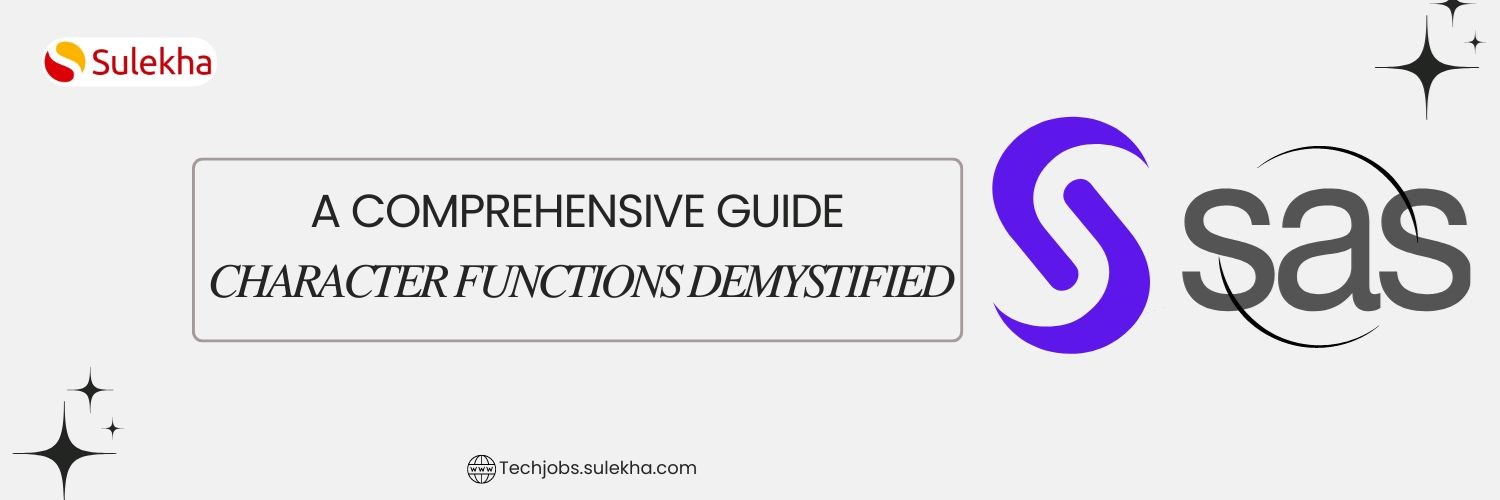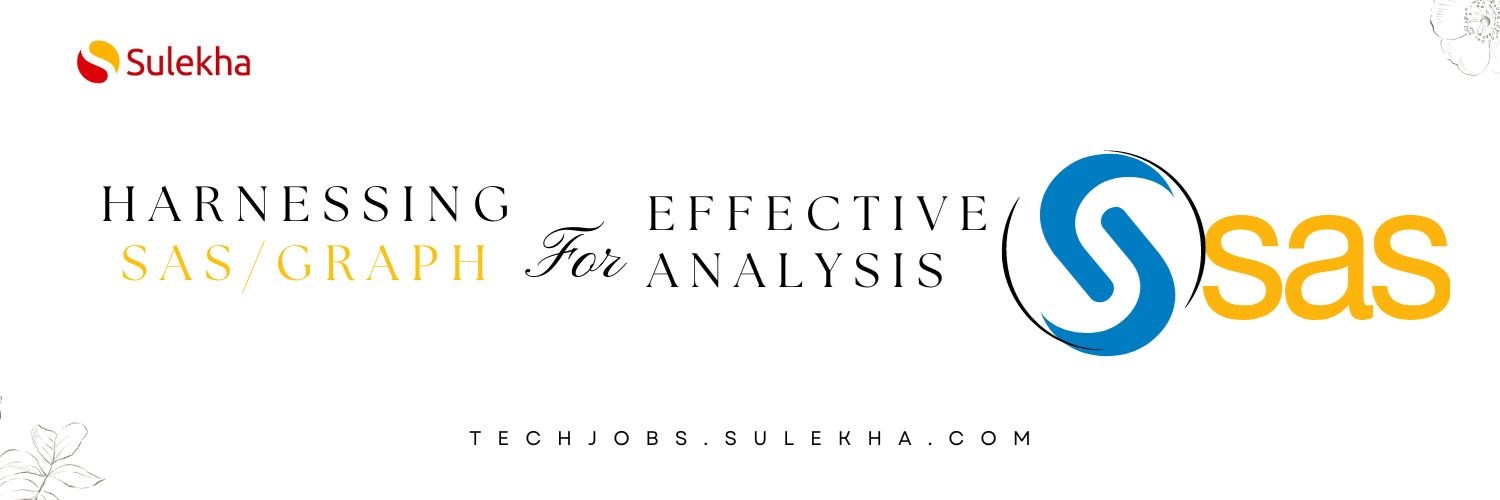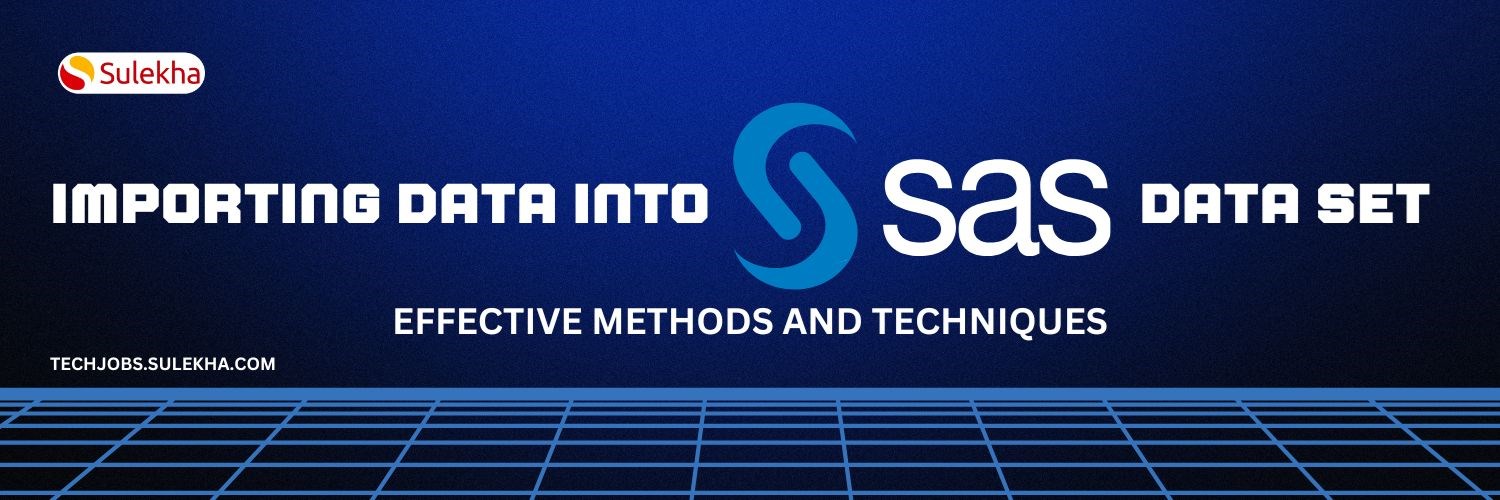Developed by SAS Institute, SAS stands for Statistical Analysis System is a software suite which facilitates advanced analytics, business intelligence, multivariate analysis, data management, and predictive analysis. SAS helps more than 80,000 customer sites to perform better by making better decisions. SAS being a leader in business analytics software and service, provides valuable insights on your business perspectives. It paves a way to discover new routes to success and fix things which isn’t working.The software transforms large data into usable analytics which can be used to refine your business strategies.
Technical Overview
SAS software suite helps businesses to store, alter, manage and retrieve data from different sources and to perform the statistical analysis on the data. The software provides advanced options such asgraphical point-and-click user interface through the SAS programming language, such that even the non-technical users find it easy to work with the system. The data must be in Excel table format or SAS format in order to use the SAS.
SAS software programs have two steps: DATA step and PROC step. DATA step helps retrieve and manipulate the data which outputs a SAS Data set. PROC step analyses the data. All the steps comprise a series of statements.
The DATA step comprises the executable statements and decorative statements. The executable statements direct the software to take action whereas the decorative statements provide instructions to read or alter the data set and its appearance. The DATA step constitutes of two phases, which are compilation and execution. The declarative statements are processed and the syntax errors are pointed out during the compilation phase. Each executable statementcan be processed sequentially in the execution phase. The data sets are organized into tables which comprise rows and columns. The rows are called ‘observations’ and columns are called ‘variables’.

The PROC step comprises the PROC statements. They call the named procedures which perform analysis and reporting on data sets. The resulting information from the PROC step is the statistics, analysis report, and graphics. PROC consists of more than 300 procedures and each such procedure contains the substantial body of programming as well as statistical work. They display the results, sort the data, and perform other data operations. Pieces of code are coded once and referenced in multiple places to assist the repetitive task by using SAS Macros.
SAS comprises the Output Delivery System which assists to publish the data in HTML, Excel, PDF or other required formats. The SAS point-and-click interface helps to generate the code in order to manipulate the data and perform analysis on data, which does not require any prior SAS programming knowledge.
Components of SAS
The SAS software suite comprises more than 200 components out of which some components are mentioned below:
- Base SAS – Basic procedures and data management
- SAS/OR – Operations research
- SAS/ETS – Econometrics and Time Series Analysis
- SAS/IML – Interactive matrix language
- SAS/INSIGHT – Data mining
- SAS/PH – Clinical trial analysis
- SAS/STAT – Statistical analysis
- SAS/GRAPH – Graphics and presentation
- Enterprise Miner – data mining
- Enterprise Guide - GUI based code editor & project manager
- SAS/AF – Applications facility
- SAS/QC – Quality control
- SAS EBI - Suite of Business Intelligence Applications
- SAS Grid Manager - Manager of SAS grid computing environment
Benefits of SAS
- Delivers an intelligent platform within reachable budget which includes all the IT needs to run the web applications.
- Provides a complete and robust platform for information delivery within the enterprise. Distributing the information to required personals in the enterprise is very crucial which boosts the decision-making skills and the performance of the organization.
- SAS Analytics and SAS Business Intelligence provide a simple yet effective way to provide SAS intelligence to the customers irrespective of their location, user interface and the desired output format. This flexibility helps saving the resource time thereby increasing the user productivity.
- SAS offers a centralized web-based administration and user-friendly interface for data preparation and management. This interface assists to monitor the server performance, manage, and receive alerts and to generate performance reports.
- A SAS administrator has the capability to track the run-time of job flows.
Find a course provider to learn SAS
Java training | J2EE training | J2EE Jboss training | Apache JMeter trainingTake the next step towards your professional goals in SAS
Don't hesitate to talk with our course advisor right now
Receive a call
Contact NowMake a call
+1-732-338-7323Enroll for the next batch
SAS Course Online Training
- Sep 1 2025
- Online
SAS
- Sep 2 2025
- Online
SAS Course Online Training
- Sep 3 2025
- Online
SAS
- Sep 4 2025
- Online
SAS Course Online Training
- Sep 5 2025
- Online
Related blogs on SAS to learn more

SAS Character Functions Demystified: A Comprehensive Guide
Master the power of SAS character functions and learn how to streamline your data processing tasks.

A Comprehensive Guide on Character Functions of SAS
Now we shall discuss a Comprehensive Guide on Character Functions of SAS in detail.

From Data to Graphs: Harnessing SAS/GRAPH for Effective Analysis
Learn how to effectively analyze and present your data with this comprehensive guide to SAS/GRAPH.

Introduction to SAS/Library
In this blog, we shall discuss introduction to SAS and its library in detail

Importing Data into a SAS Data Set: Effective Methods and Techniques
we have discussed how to import data into SAS data set, best practices for data reading in SAS, and how to create a dataset

Comprehensive Guide to SAS Functions
Learn how to leverage SAS functions to streamline your data analysis and understand the features of SAS functions.

INTRODUCTION TO SAS
We have discussed What is SAS, variables in SAS, six attributes of SAS stores and many other unique concepts of SAS.

SAS to help British Forces to hunt down Nazi Criminals!
As the SAS empowers the professionals to accomplish various success, it has also revealed it’s to open the secrets and postwar exploits helping the government to hunt down the Nazi crime people.

SAS Factory Miner will take your business analysis to next level!
SAS gained significant reach across the globe by providing a reliable platform for advanced statistical analytics. As the more and more organizations grow their need to acquire analytical software, SAS skills

Welcome SAS Factory Miner which takes your business analysis to next level!
SAS gained significant reach across the globe by providing a reliable platform for advanced statistical analytics. As the more and more organizations grow their need to acquire analytical software, SAS
Latest blogs on technology to explore

Understanding Artificial Intelligence: Hype, Reality, and the Road Ahead
Explore the reality of Artificial Intelligence (AI) — its impact, how it works, and its potential risks. Understand AI's benefits, challenges, and how to navigate its role in shaping industries and everyday life with expert training programs

How Much Do Healthcare Administrators Make?
Discover how much healthcare administrators make, the importance of healthcare, career opportunities, and potential job roles. Learn about salary ranges, career growth, and training programs with Sulekha to kickstart your healthcare administration jo

How to Gain the High-Income Skills Employers Are Looking For?
Discover top high-income skills like software development, data analysis, AI, and project management that employers seek. Learn key skills and growth opportunities to boost your career.

What Companies Expect from Product Managers in 2025: Skills, Tools, and Trends
Explore what companies expect from Product Managers in 2025, including essential skills, tools, certifications, and salary trends. Learn how to stay ahead in a rapidly evolving, tech-driven product management landscape.

Breaking Into AI Engineering: Skills, Salaries, and Demand in the US
Discover how to break into AI engineering with insights on essential skills, salary expectations, and rising demand in the US. Learn about career paths, certifications, and how to succeed in one of tech’s fastest-growing fields.

Cybersecurity Training: Powering Digital Defense
Explore top cybersecurity training programs in the USA to meet rising demand in digital defense. Learn about certifications, salaries, and career opportunities in this high-growth field.

Why Pursue Data Science Training?
Empower your career in a data-driven world. Learn why data science training is crucial for high-demand jobs, informed decisions, and staying ahead with essential skills.

What Does a Cybersecurity Analyst Do? 2025
Discover the vital role of a Cybersecurity Analyst in 2025, protecting organizations from evolving cyber threats through monitoring, threat assessment, and incident response. Learn about career paths, key skills, certifications, and why now is the be

Artificial intelligence in healthcare: Medical and Diagnosis field
Artificial intelligence in healthcare: Medical and Diagnosis field

iOS 18.5 Is Here: 7 Reasons You Should Update Right Now
In this blog, we shall discuss Apple releases iOS 18.5 with new features and bug fixes